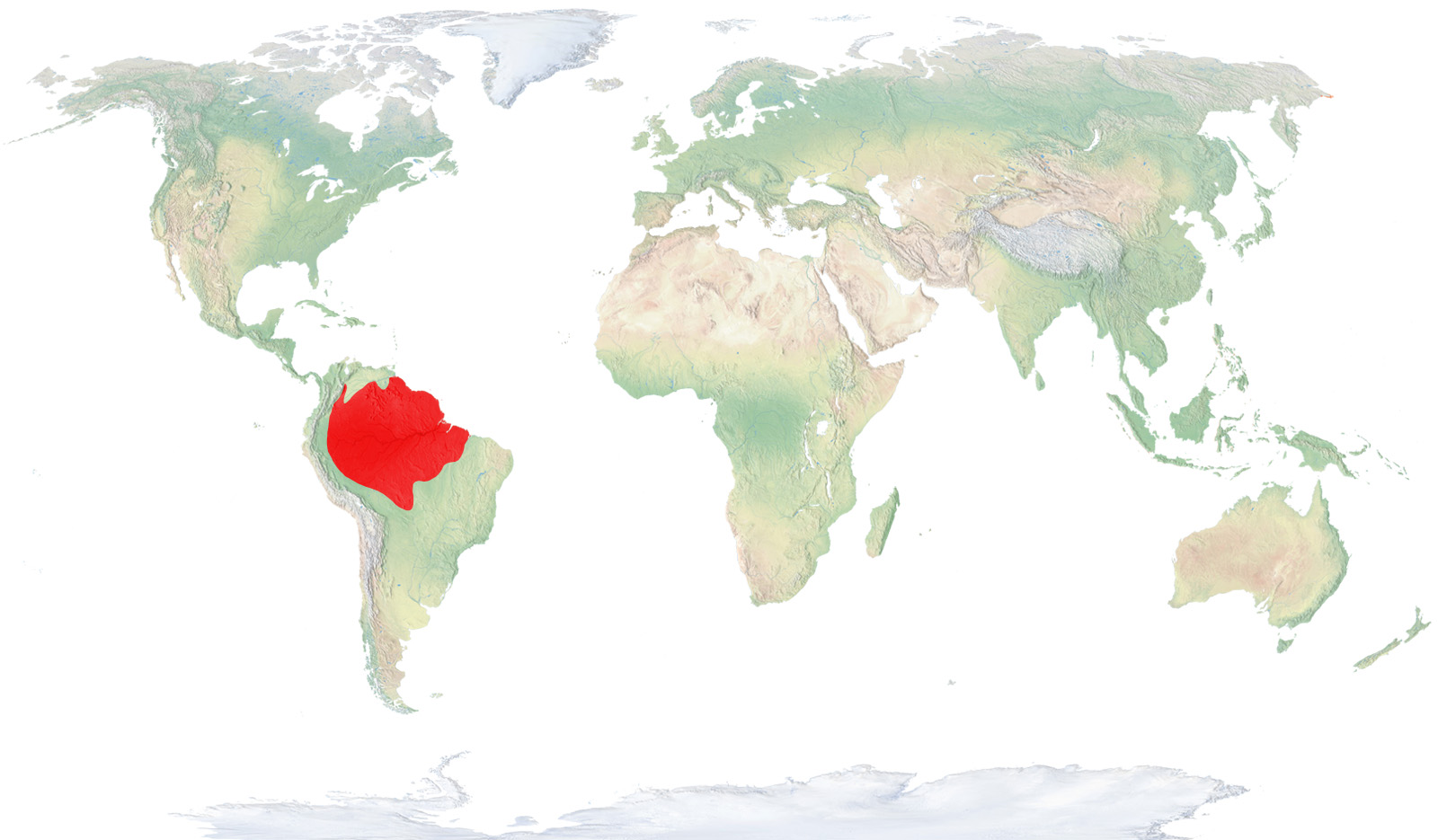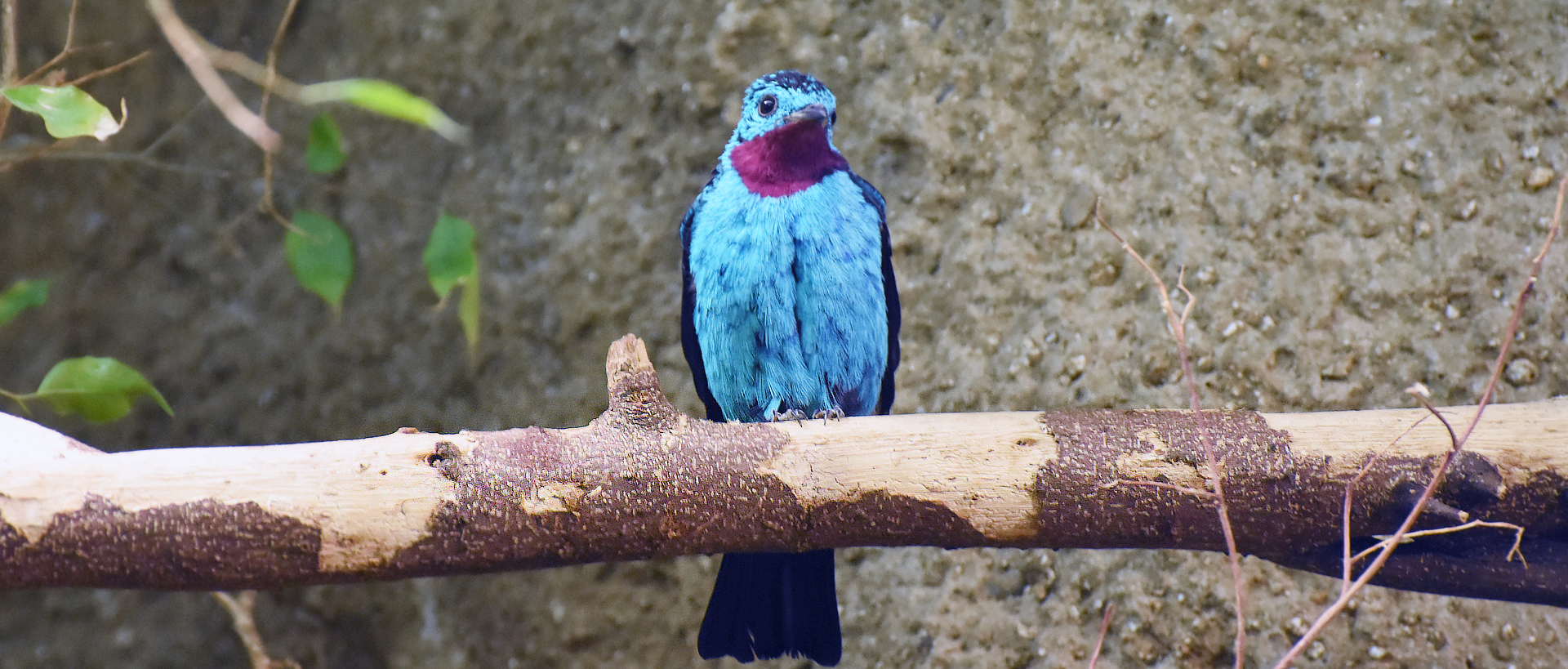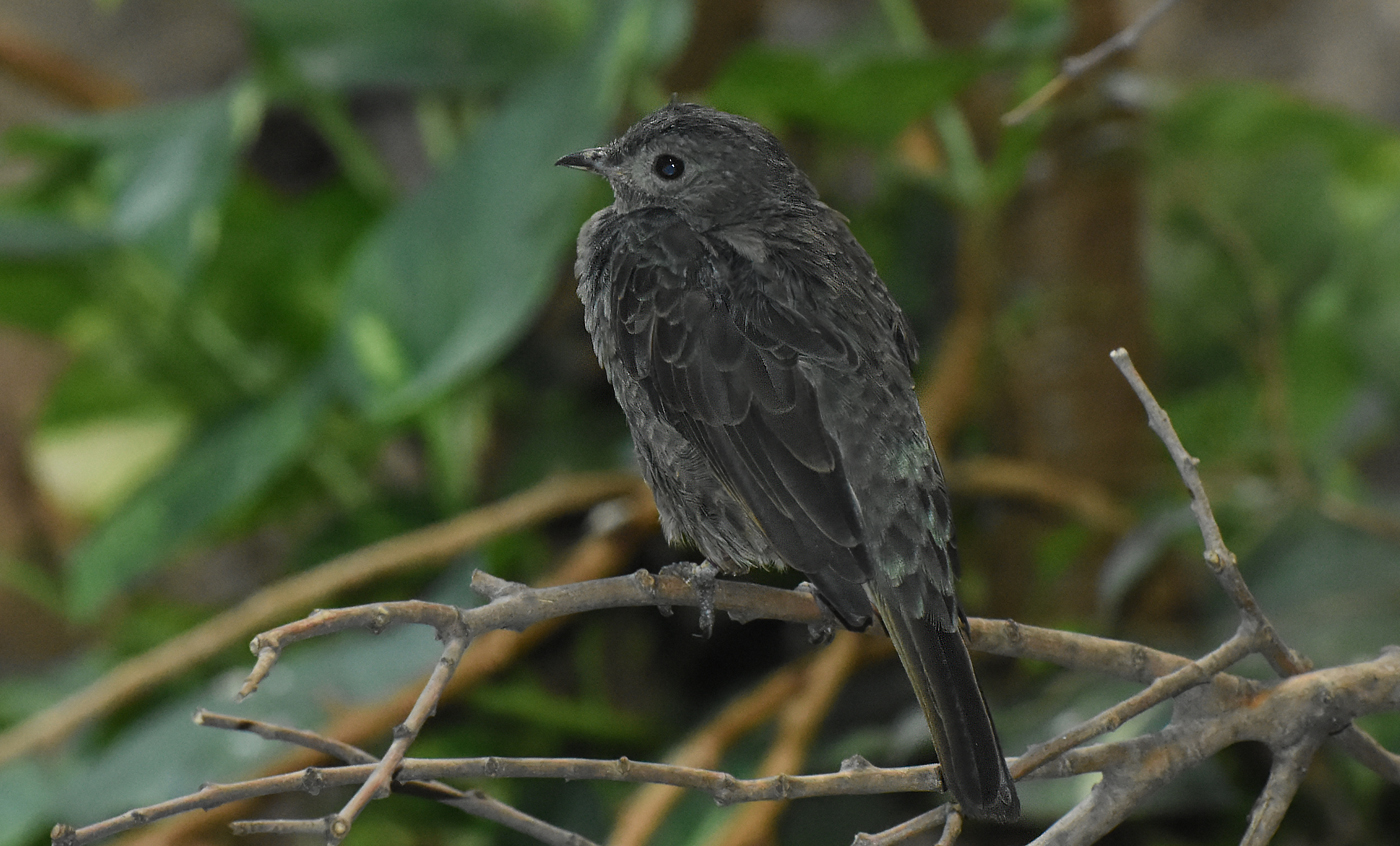Spangled cotinga
Spangled cotingas are striking tropical birds, living in the forests and jungles of the north of South America, from Venezuela and the Guyanas to Colombia, Bolivia and the Amazon region of Brazil.
It eats mainly fruit and the males and females are quite distinct: the males have spectacularly bright plumage, while the females are a much duller brownish colour.
Natural habit
North of South America, from Venezuela to Colombia and guava, Bolivia and the Amazon region of Brazil.

- Distribution / Resident
- Breeding
- Wintering
- Subspecies
Risk level
- Extint
- Extint in the wild
- Critically endangered
- In Danger
- Vulnerable
- Near threatened
- Minor concern
- Insufficient data
- Not evaluated
Taxonomy
Physical characteristics
Biology
Reproduction
Biology
The Spangled cotinga is an eye-catching colourful tropical bird, essentially standing out due to its distinct sexual dimorphism: males have spectacularly coloured plumage—blue and turquoise, with purple hues on the wings, tail and scapular feathers, with a bright purple gular area—while the females are much more discreet, a brownish colour with greys on the back and lighter brown on the dorsal and belly areas.
They live in the forests and jungles of northern South America, from Venezuela and the Guianas to Colombia, Bolivia and the Amazon region of Brazil, up to altitudes of 600 metres. They rarely go higher than this.
Fundamentally frugivorous, even though during breeding season it adds several insect species to its diet.
It nests in trees with some height, creating a cup shaped nest padded with all types of plant matter, where it lays a single egg that is incubated for no longer than 20 days.
When a predator approaches the nest, cotingas fly up to the treetops, performing aerial acrobats and spreading their tails like a fan to attract the intruder and expel them. Their antics to distract intruders are conspicuous and simply wonderful.
It is resident and sedentary, although nomadic movements of this species are periodically seen in Venezuela, dependent on the climate and rainfall.
It is not endangered and is abundant and common in forests and jungles in its entire area of distribution.





